Recent Articles
Popular Makes
Body Types
10 Things You Need to Know About the 2018 Kia Stinger
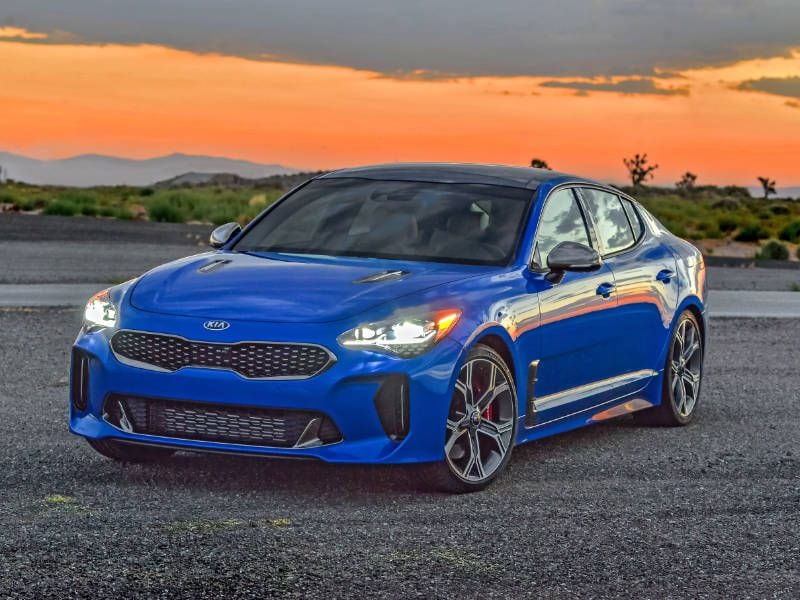
2018 Kia Stinger blue hero ・ Photo by Kia
With apologies to Oldsmobile, may it rest in peace, this is not your father’s Kia. The Stinger is a stylish fastback sedan straddling the mid-size/full-size border. It will contend in the entry-luxury game, where it challenges entries from the Lords of the Autobahn — Audi, BMW and Mercedes-Benz — as well as Jaguar, another underdog in the same realm, though one that's more established than Kia with a higher prestige factor and a long and distinguished heritage.
At a glance, the Stinger’s assets are snappy styling and the attractive price/value index that’s typical of products from Kia and its corporate parent, Hyundai. But really evaluating and appreciating this Korean newcomer requires seat time. Its value will generate some attention, but this is not a realm in which buyers make their purchase decisions strictly online without getting behind the wheel. This is a realm of sports sedans, and dynamics — the fun-to-drive factor — ranks high on the list of buyer priorities. And this is the characteristic that gives the Stinger a surprising level of parity with the game’s established players.
1) The Stinger differs from all previous Kias.
In a lineup whose current sales star is the funky little Soul hatchback, the Stinger represents a sharp change of direction. It’s a rear-wheel drive sports sedan with serious performance cred, standing out in a brand that has hitherto been composed of good-looking, civilized, competent, attractively priced sedans, SUVs and minivans that are otherwise a little vanilla.
It’s not Kia’s first rear-drive four-door. Like the Stinger, the K900 made its debut as a luxury sedan challenging the Teutons, loaded with standard luxe features at a very competitive price. But the full-size K900's dynamics recall American luxury cars of the late 1950s and 1960s, more nautical than automotive, a set of traits exacerbated by steering whose tactility seems to be governed by the Official Secrets Act. In terms of dynamics, the Stinger is everything the K900 is not, and as a result it’s unlike anything ever to emerge from this company.
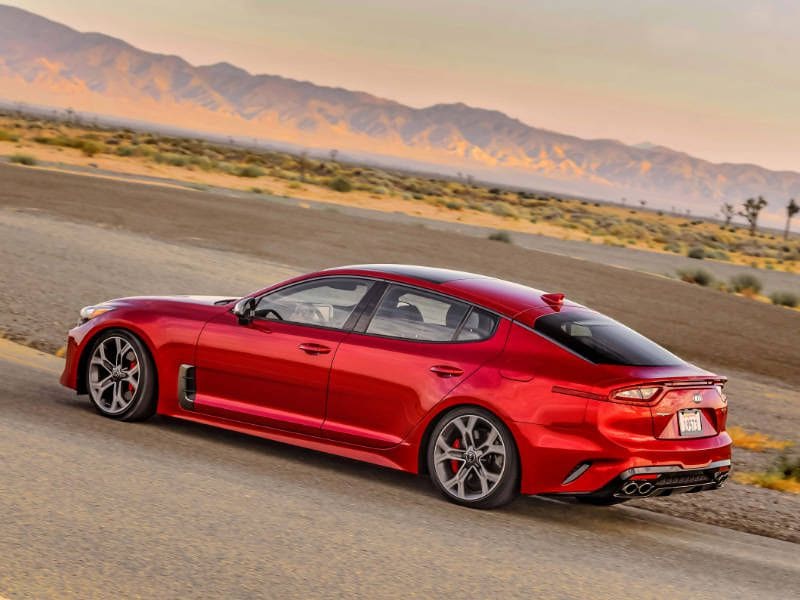
Photo by Kia
2) The foundations are shared with the Genesis G70.
Shared platforms are one of the keys to profitability in contemporary automobile production, and that’s true of the Stinger. It may be unique in Kia history, but its platform is adapted from its Hyundai corporate parent. To be precise, it comes from Hyundai’s new Genesis division, specifically the new G70 sedan. However, Kia is quick to point out that this is not a matter of different sheetmetal supported by the same bones.
It’s true that the bodywork is distinctive. The G70 is a formal sedan, whereas the Stinger is a slick four-door hatchback. But Kia has made its own adjustments to the architecture. At 114.2 inches, the Stinger's wheelbase is longer than the G70's, the chassis is commendably stiff, the suspension tuning is firm and its persona is distinctly sporty, whereas the G70 tilts more toward quiet luxury.
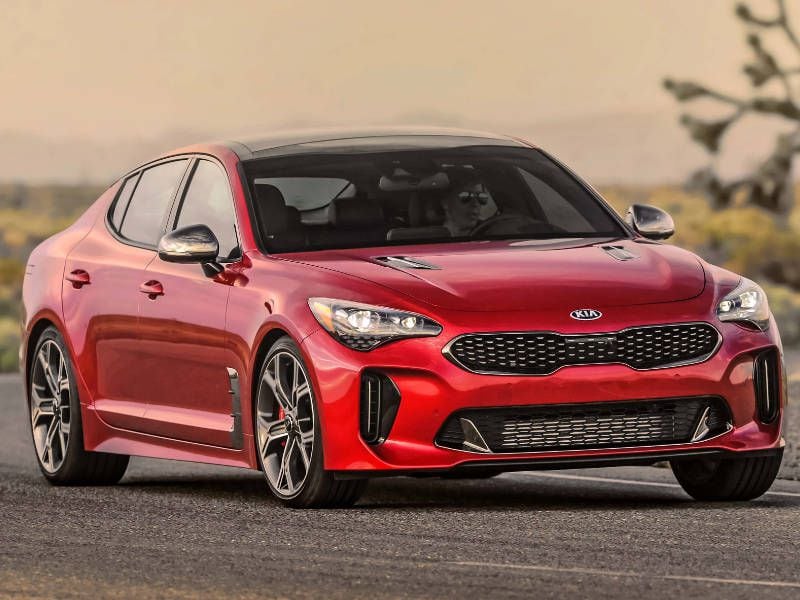
Photo by Kia
3) You have four powertrain choices.
Like its European target competitors, the Stinger offers a variety of power options — two engines, and rear- or all-wheel drive. There’s one transmission: an eight-speed automatic, operable via paddle shifters or as a full auto. No manual transmission is offered.
Both engines are turbocharged. A 2.0-liter four-cylinder, shared with the Optima sedan and rated for 255 horsepower and 260 pound-feet of torque, is standard in the two lower trim levels, Stinger and Stinger Premium. The GT, GT1, and GT2 are propelled by a 3.3-liter twin turbo V6 with 365 hp and 375 lb-ft. Those power numbers compare favorably with the various Audis, Bimmers and Benzes the Stinger is designed to challenge.
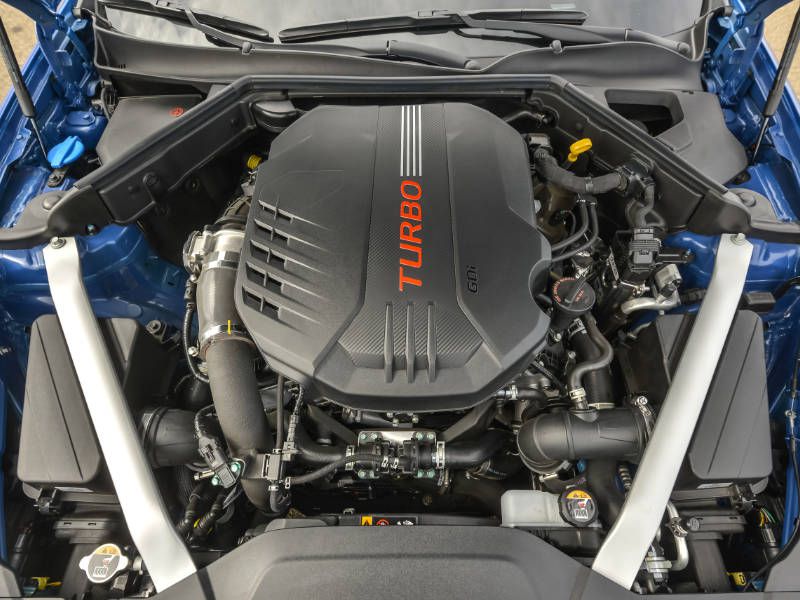
Photo by Kia
4) The Stinger is a Korean recipe with strong Euro seasoning.
Though Kia is a Korean company, the styling of its vehicles have taken on a more international look since Peter Schreyer was lured away from Volkswagen AG in 2006, taking charge of corporate design and later ascending to the company’s presidency. He is the first non-Korean to hold the title. The actual design of the Stinger was left to Gregory Guillaume, another European, who cites his inspiration as the Maserati Ghibli of 1967-'73.
But sports sedans are composed of more than attractive sheetmetal. And to that end, the Stinger’s dynamic development owes much to Albert Biermann, imported from BMW’s M GmbH, the BMW go-faster shop, where he was the boss. Biermann’s credentials are enviable, and the Stinger’s eager responses are a testimonial to his influence.
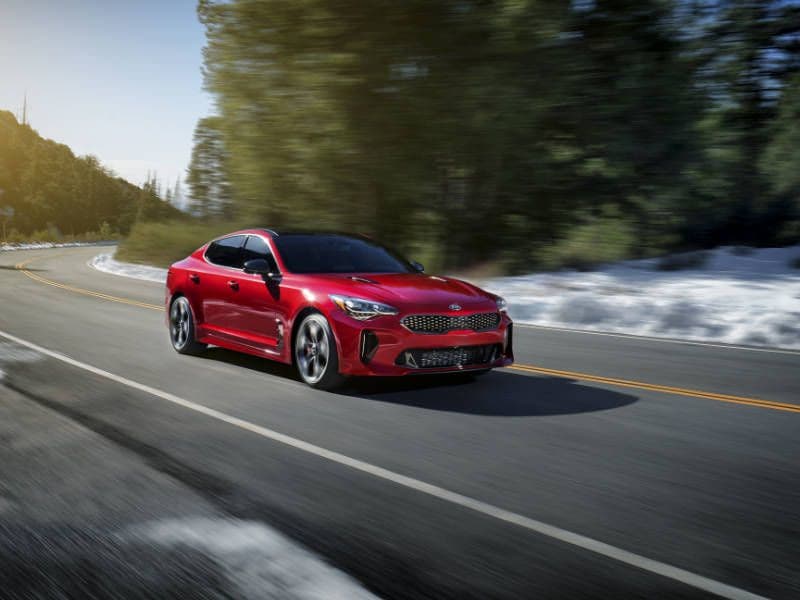
Photo by Kia
5) Kia tackled the world's toughest development crucible.
Consistent with its European influence, the Stinger’s dynamic development program included lapping at the Nordschleife section of Germany’s famed Nurburgring. Its 12.9 miles are perhaps the most challenging of any track on earth, and the circuit has become the definitive crucible for honing the reflexes of performance cars. Audi, BMW, Mercedes and Porsche are Nordschleife regulars. Korean cars are a rarity here, but with Herr Biermann in charge of Kia’s ride and handling refinement, it’s a good bet that their visits will become more frequent.
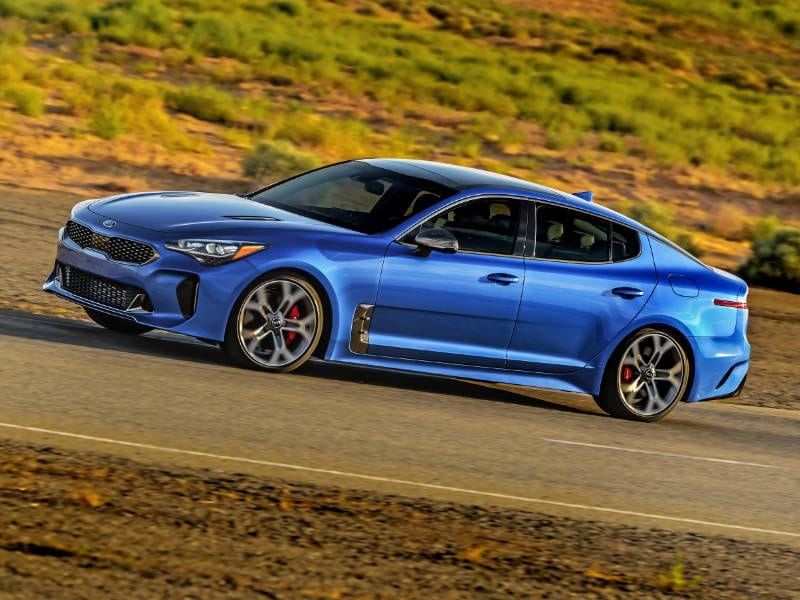
Photo by Kia
6) The Stinger is quick on its feet.
Our experience with the Stinger didn’t include exercise on the Nordschleife, but it did include hot laps on the 2.4-mile Hyundai-Kia handling course in the high desert near Mojave, California. The layout is flat and sinuous, with a challenging mixture of fast sweeping turns, decreasing-radius turns and blind entries. The test squadron included six cars, half with all-wheel drive, all with the 3.3-liter twin-turbo V6 engine.
What emerged after a satisfying number of laps was a solid impression of eager response and total predictability. The Stinger is quick on its feet, and in sport mode (others are standard, default mode, Eco, Comfort and Custom) its cornering attitudes are commendably flat — very little rock 'n roll.
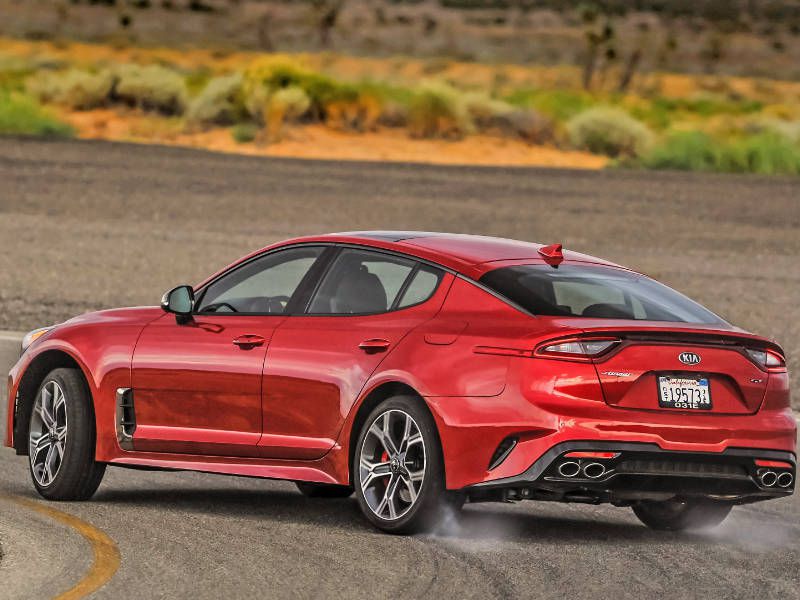
Photo by Kia
7) Steering is surgically precise.
While the Stinger’s handling is generally on par with its benchmark cars, the element that gives this newcomer an edge is its steering. Unlike most contemporary cars, the Stinger’s steering is a conventional hydraulic system, as distinct from the electric systems used elsewhere.
Some electric power steering systems are perfectly fine, but the Stinger’s hydraulic system is sports-car quick (2.2 turns from extreme left to extreme right), laser accurate and highly tactile — it tells the driver exactly what the front wheels are doing. Accurate steering can make even a mediocre car feel responsive. The Stinger is a very responsive car, and its steering puts an exclamation point on its athleticism. All steering systems should be as good as this.
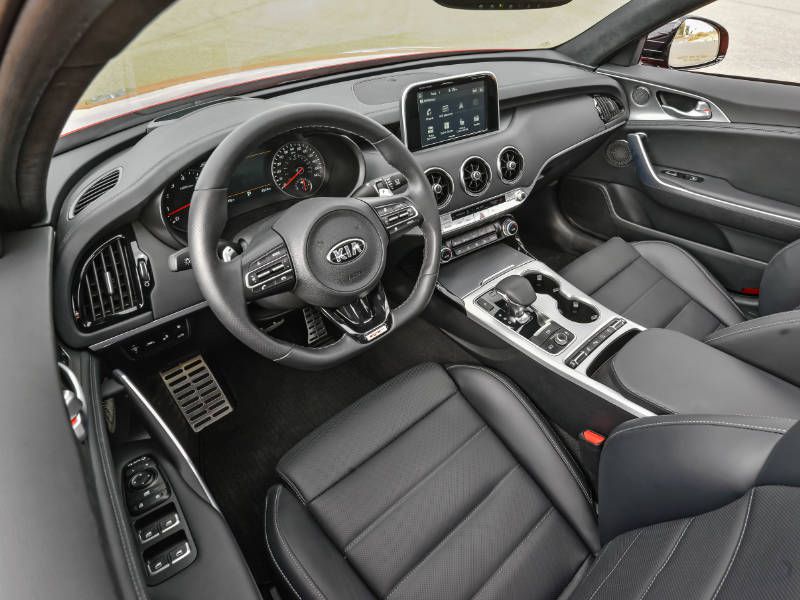
Photo by Kia
8. All-wheel drive and rear-wheel drive have their own advantages.
As noted, the Stinger is available in rear- and all-wheel drive configurations, regardless of engine. The all-wheel drive system is rear-biased — no more than 50 percent of the engine’s power goes to the front wheels, depending on demand. And the system features torque vectoring, apportioning power side-to-side contingent on available traction.
With all-wheel drive, the Stinger is appreciably heavier and also easier to drive to its limits. On the other hand, those limits are a little lower than those of the rear-drive Stinger. Some of this can be put down to the difference in mass — 4,023 pounds versus 3,829 — and the inherent tendency of all-wheel drive to understeer at speed. But there are no real demerits to the Stinger. The transmission could respond a little better to paddle downshifts, and its tendency to automatically upshift approaching redline can be annoying. However, these are traits an owner will soon learn and accommodate.
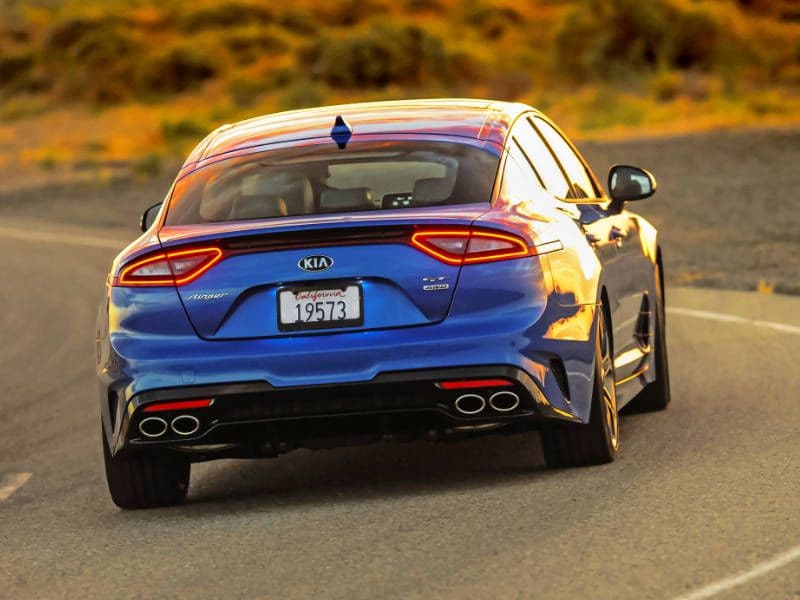
Photo by Kia
9) It's got slick styling and a roomy interior.
With its long hood, wide stance and short rear deck, the Stinger has classic sports-sedan proportions. In fact, there’s essentially no rear deck at all; thanks to the hatchback design, the rear roofline flows downward almost all the way to the vertical break of the tail. The design flows from front to rear, punctuated just behind the front fenders by exhaust vents for the cooling air that flows over the powerful front brakes. The only false note is the pair of faux vents on the hood that have no function other than someone’s idea of sporty cosmetics — a discordant note on an otherwise impressive design.
Inside, the Stinger is commendably roomy, with surprising rear headroom considering the sloping roofline. The front seats, equipped with adjustable bolsters in some trims, are set low to reduce the center of gravity, although there’s lots of adjustability. While the interior is comfortable and sporty, with the availability of the infotainment and connectivity features everyone expects today, the interior — the dashboard in particular — could look a little more upscale, as befits this price and competitive category.
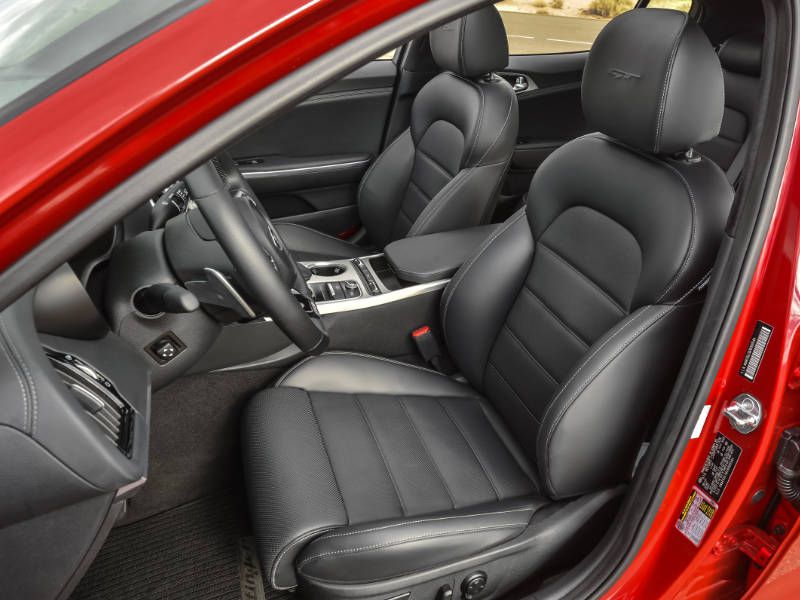
Photo by Kia
10) The Stinger is available in five trim levels.
The Stinger’s tentative pricing ladder has five rungs, and the distance from bottom to top is unusually tall: a range of $17,600. The starting point is the basic Stinger, at $32,795, followed by the Stinger Premium at $37,895. Both of the first two offerings have the 2.0-liter turbo engine. The top three entries — Stinger GT 3.3 ($39,895), GT1 ($44,395), GT2 ($50,395) — are powered by the 3.3-liter turbo V6. For all-wheel drive, add $2,200 to any model. (With the Stinger still some two months away from making its showroom appearance, Kia characterizes this pricing as preliminary.)
At $50,000, the Stinger may begin to looks a little pricey. But that top-of-the-line price is at the entry end of MSRPs for cars like the Audi A6, BMW 5 Series, and Mercedes E-Class. And its performance is a solid match for the Teutonic trio. If brand-name prestige isn’t a gotta-have-it priority, this slick new Kia is worth a look.
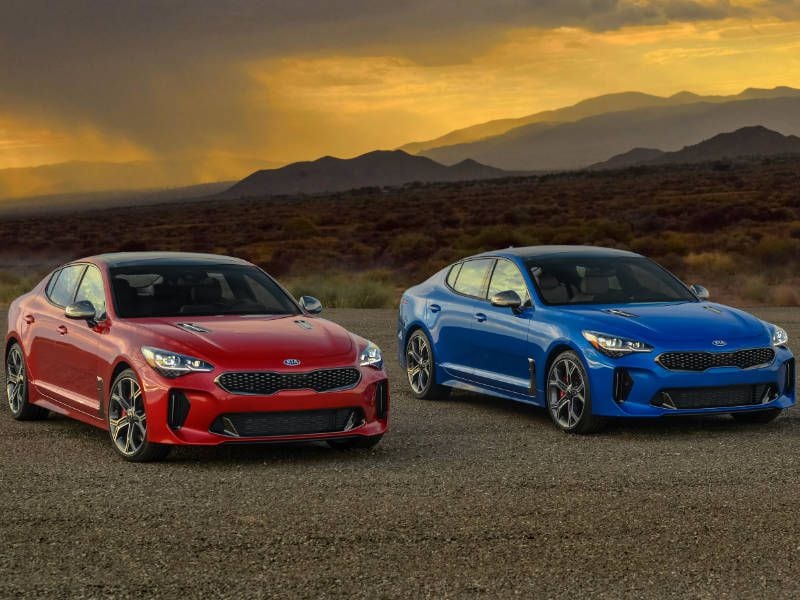
Photo by Kia